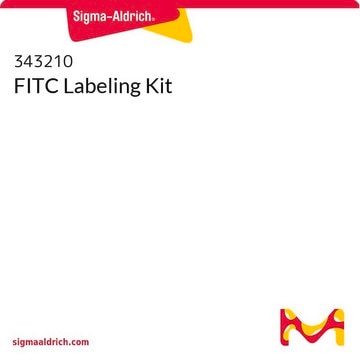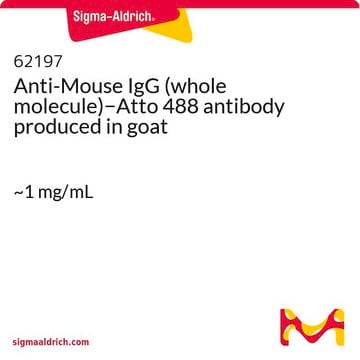38371
Atto 488 Protein Labeling Kit
BioReagent, suitable for fluorescence
About This Item
Produits recommandés
Gamme de produits
BioReagent
Fabricant/nom de marque
ATTO-TEC GmbH
Fluorescence
λex 488 nm; λem 520 nm in 0.1 M phosphate buffer, pH 7.0 (recommended)
Adéquation
suitable for fluorescence
Température de stockage
2-8°C
Vous recherchez des produits similaires ? Visite Guide de comparaison des produits
Catégories apparentées
Description générale
Application
Informations légales
Code de la classe de stockage
10 - Combustible liquids
Classe de danger pour l'eau (WGK)
WGK 3
Point d'éclair (°F)
Not applicable
Point d'éclair (°C)
Not applicable
Certificats d'analyse (COA)
Recherchez un Certificats d'analyse (COA) en saisissant le numéro de lot du produit. Les numéros de lot figurent sur l'étiquette du produit après les mots "Lot" ou "Batch".
Déjà en possession de ce produit ?
Retrouvez la documentation relative aux produits que vous avez récemment achetés dans la Bibliothèque de documents.
Les clients ont également consulté
Articles
Protein labeling kits with Atto and Tracy dyes provide easy fluorescent labeling of purified proteins, enzymes, and antibodies.
Notre équipe de scientifiques dispose d'une expérience dans tous les secteurs de la recherche, notamment en sciences de la vie, science des matériaux, synthèse chimique, chromatographie, analyse et dans de nombreux autres domaines..
Contacter notre Service technique





